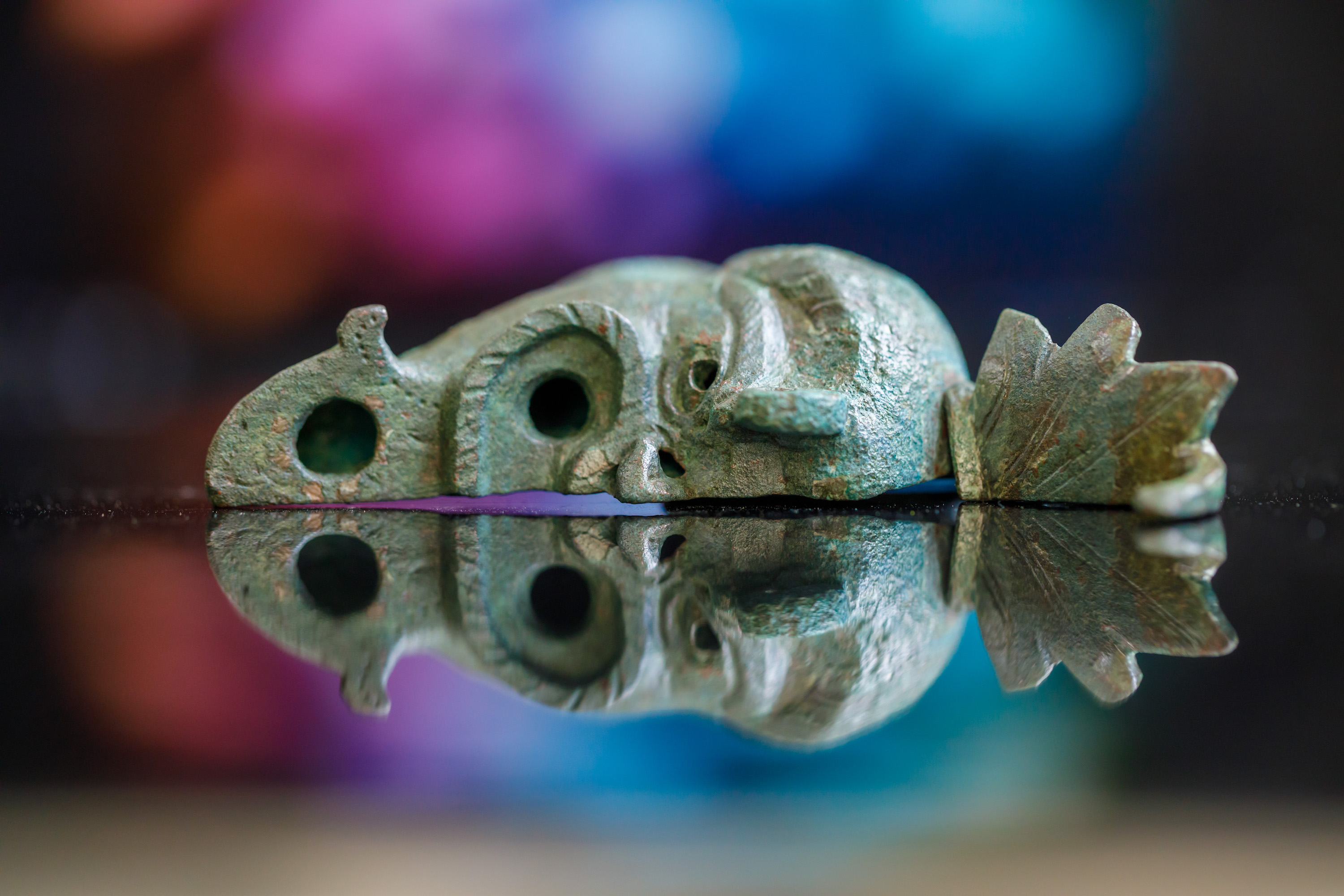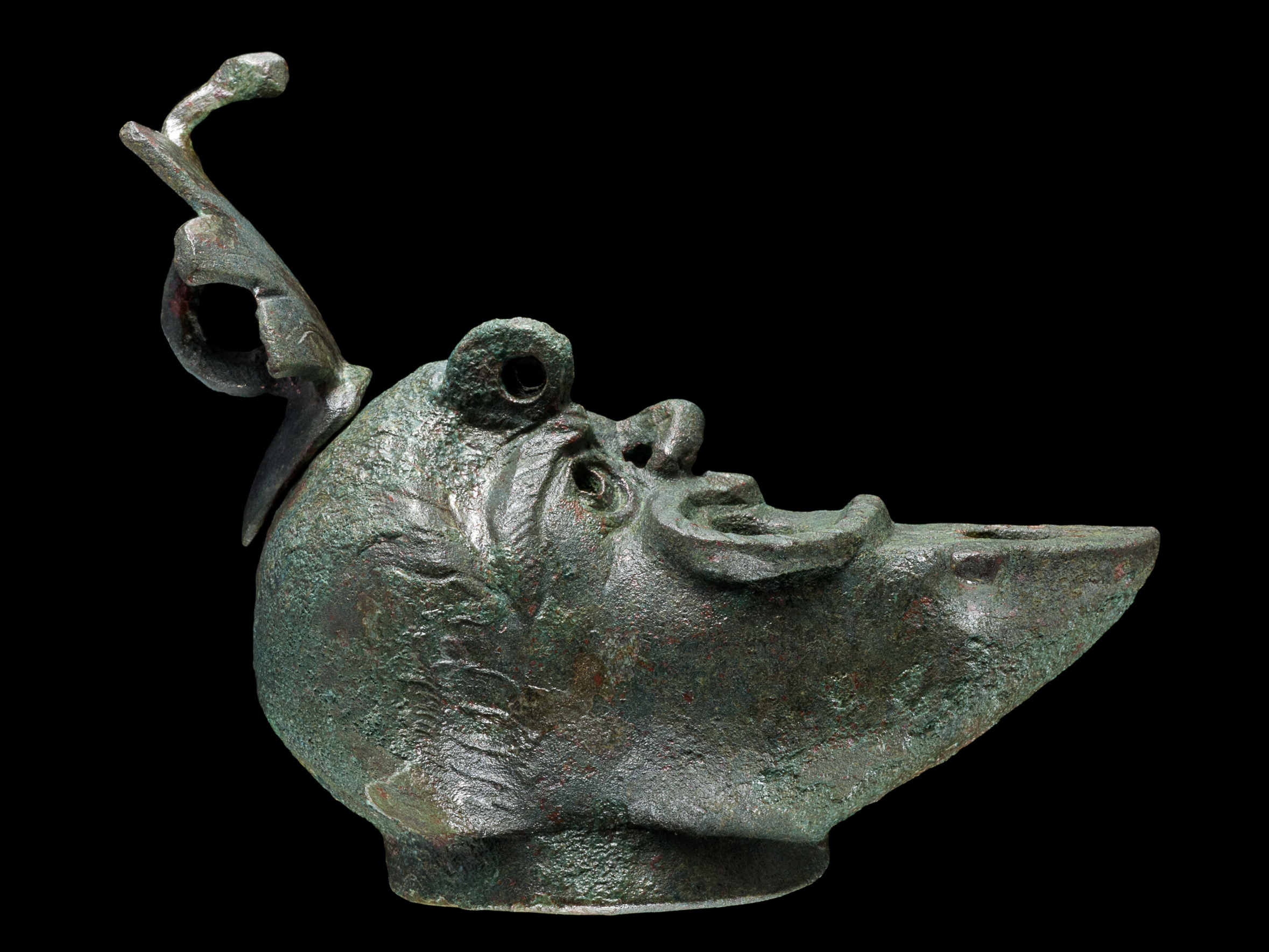Grotesque 'good luck' lamp from Roman Jerusalem is missing half its face
Researchers in Budapest think they know where the 2,000-year-old lamp's twin is.

Archaeologists excavating ancient tunnels below the city of Jerusalem have discovered a curious good luck charm sitting amid the stones: a 2,000-year-old oil lamp made of bronze and shaped like half of a grotesque human face.
The object was intentionally buried in the foundations of a building dating to the city's Roman period (approximately 63 B.C. to A.D. 300), following the destruction of the city and the Second Temple (a Jewish holy site) by Roman forces in A.D. 70. The lamp may have been cached in the building's foundation as a sort of ritual good luck charm, the researchers said.
"Foundation deposits (offerings) were prevalent in the ancient world, and were intended for luck, and to ensure the continued existence of the building and its occupants," archaeologists Yuval Baruch and Ari Levy, of the Israel Antiquities Authority, said in a statement.
"They were usually buried under the floors of buildings or foundations."
Related: 8 Archaeological sites that Jesus may have visited
The lamp is impeccably preserved, with its original wick still inside. It was likely made by a Roman metal artist and features a common grotesque motif reminiscent of Roman theater masks, the researchers said. The tip of the lamp is shaped like a crescent moon, while the handle is molded like an acanthus leaf. No other object like this has ever been found in Jerusalem, and its discovery raises a number of questions, the researchers said.
For example, what was so special about this building that it needed a good luck blessing in the first place? According to the researchers, it may have something to do with the building's location, right on top of an ancient thoroughfare known as the Pilgrimage Road — a late-Roman street connecting Jerusalem's Temple Mount to the Pool of Siloam, a rock-cut pool near the city gates, which served as a starting point for many pilgrims. The lamp's presence here "demonstrates the importance of the area even after the destruction of the Second Temple," the researchers said.
Get the world’s most fascinating discoveries delivered straight to your inbox.
The other big question is why the lamp is seemingly sheared in half. Was it meant to rest against a flat surface, such as a wall, or is there an identical twin lamp out there somewhere designed to complete the face?
A clue came a week after the lamp's discovery, when researchers from Hungary reported that they found a similar lamp — made from bronze and featuring half of a grotesque face — in Budapest in 2012. Photos of the Hungarian lamp shared with The Times of Israel seem to match the Jerusalem lamp perfectly, with one lamp showing the left-hand side of the figure's face and the other lamp showing the right side.
According to the Hungarian team, their lamp even has a small rectangular slot on its flat side, as if another piece is meant to connect to it there. The Jerusalem lamp, meanwhile, has a small, protruding ridge in approximately the same spot.
Are these lamps, separated by thousands of miles, two halves of the same whole? The researchers hope to find out, possibly by making 3D-printed models of the objects to share with their counterparts for analysis. The archaeologists may soon find out how lucky their lamps really are.
Originally published on Live Science.

Brandon is the space / physics editor at Live Science. With more than 20 years of editorial experience, his writing has appeared in The Washington Post, Reader's Digest, CBS.com, the Richard Dawkins Foundation website and other outlets. He holds a bachelor's degree in creative writing from the University of Arizona, with minors in journalism and media arts. His interests include black holes, asteroids and comets, and the search for extraterrestrial life.



